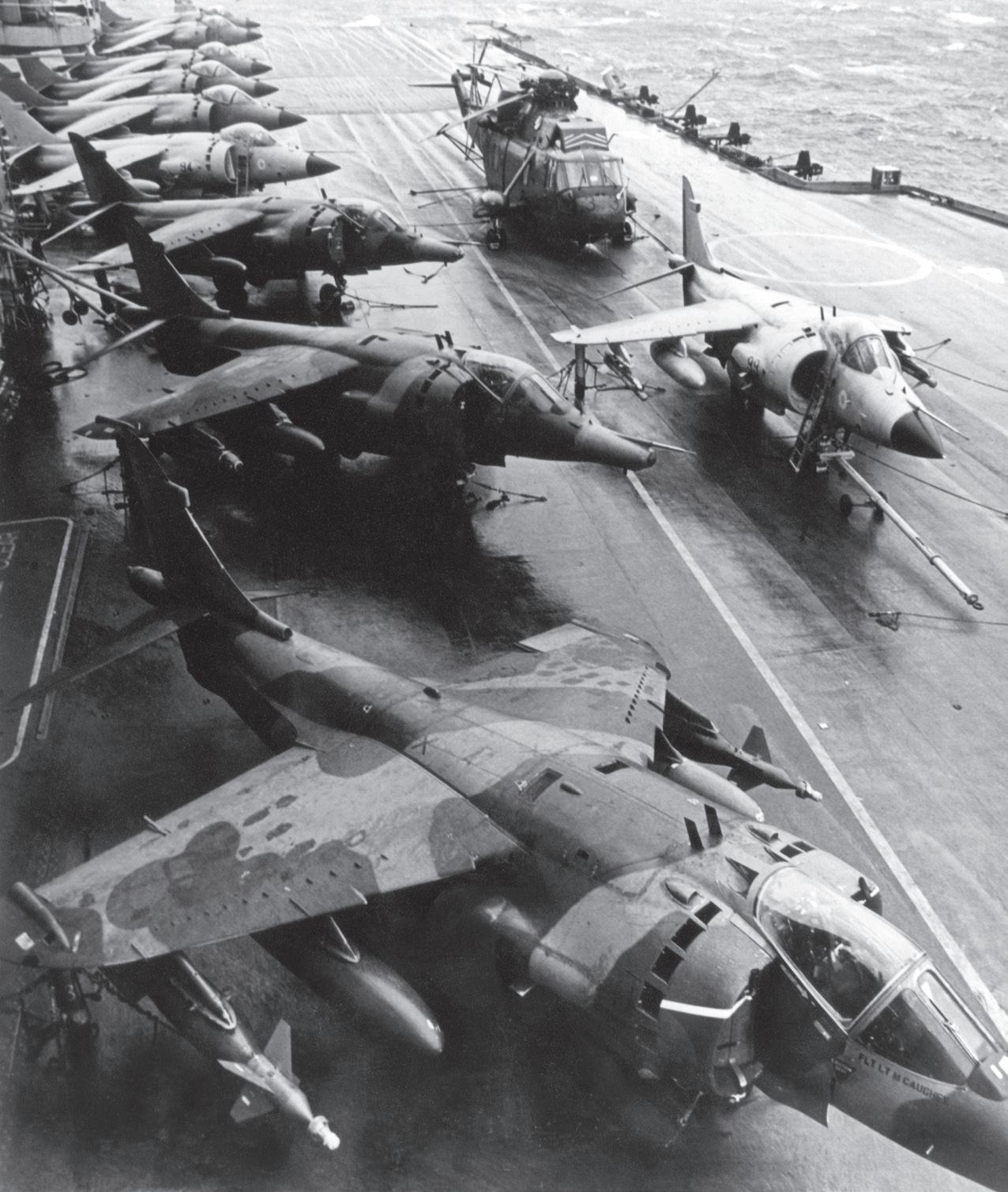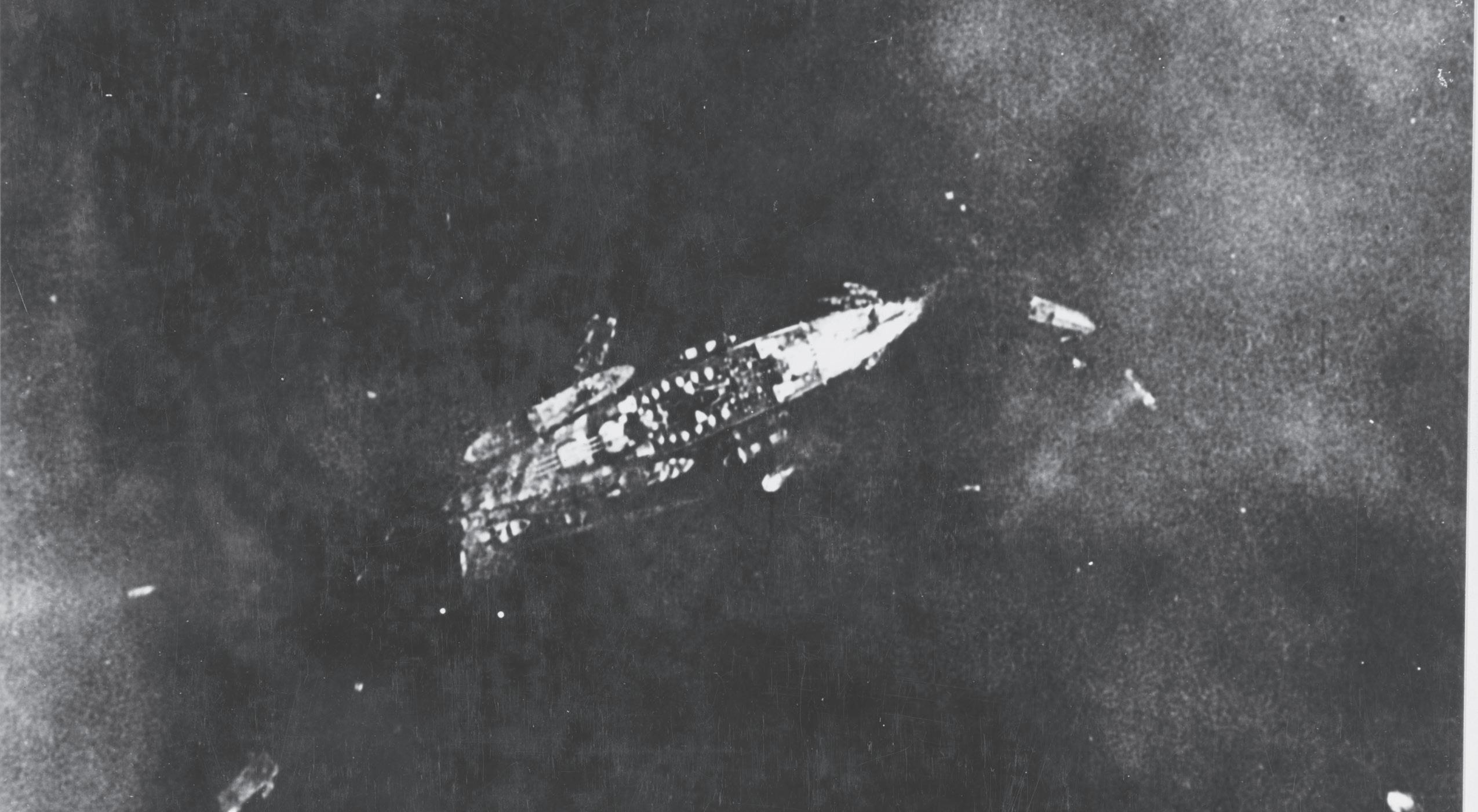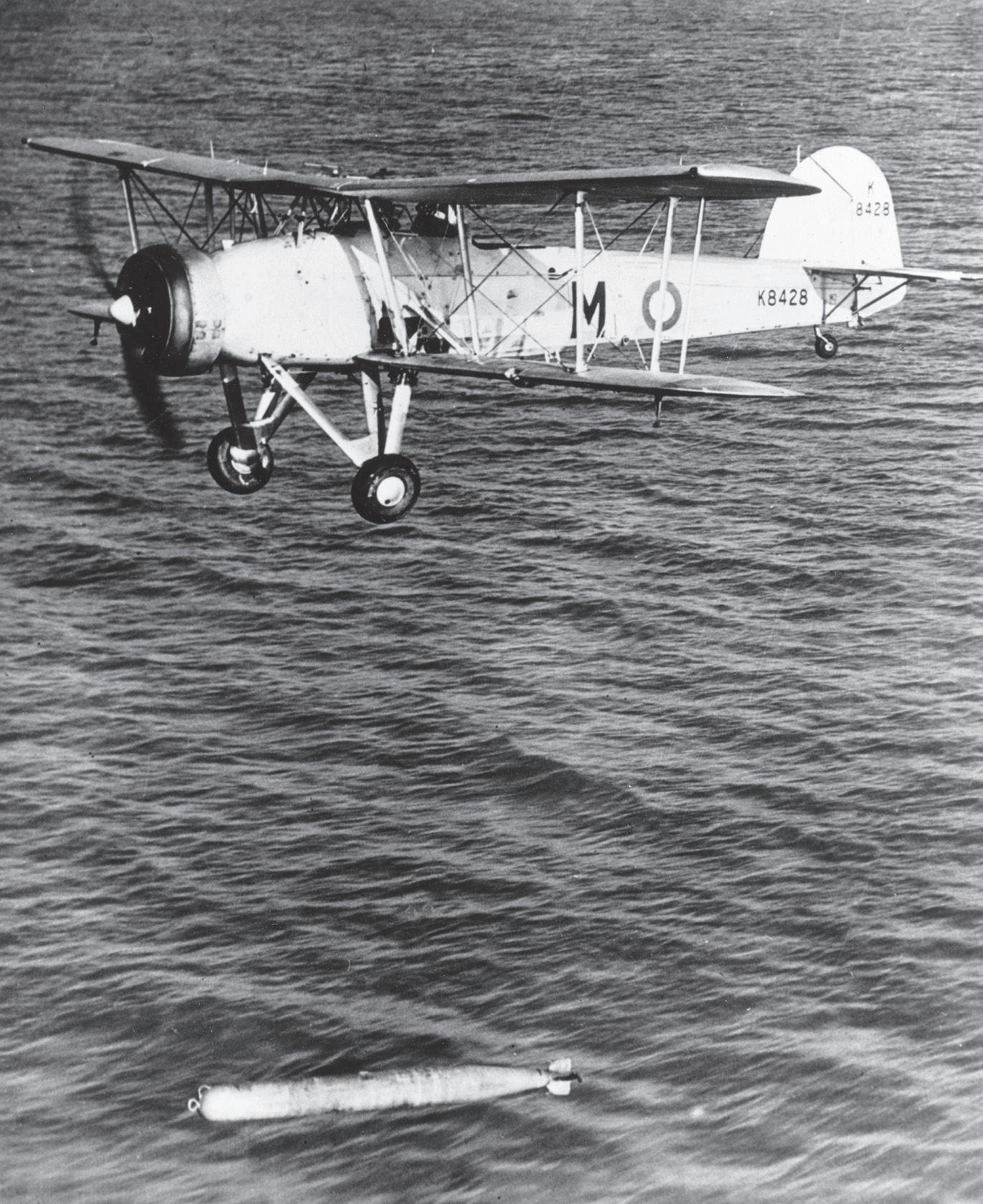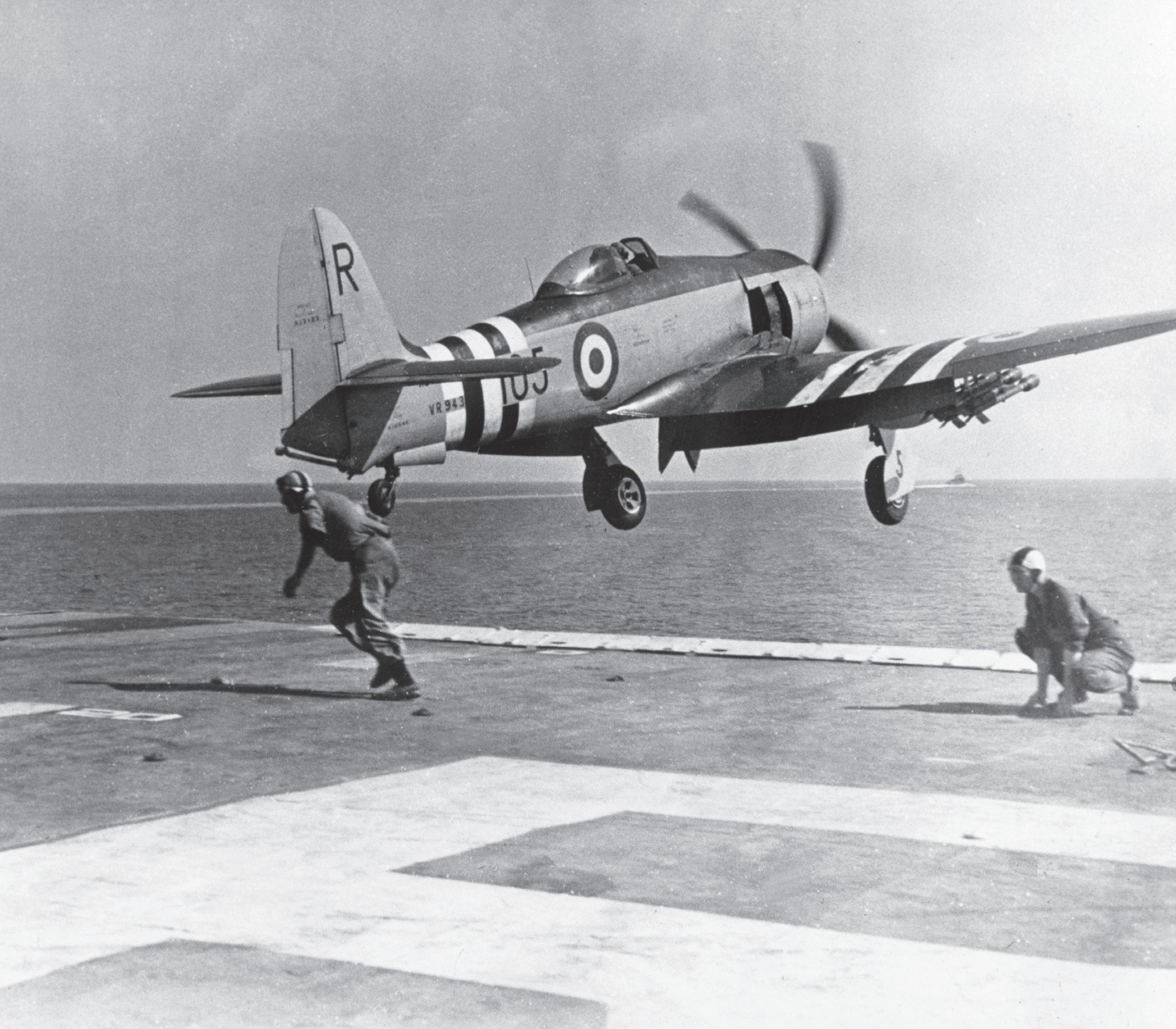
5 minute read
FROM TARANTO TO THE FALKLAND ISLANDS
FROM TARANTO TO THE FALKLAND ISLANDS
Mark Daly reviews two of the most famous British aircraft carrier actions: the Falklands War and the Battle of Taranto.
Royal Navy (RN) aircraft carriers have been constantly active since the end of World War II. In the Korean conflict of 1950 to 1953, RN aircraft carriers Glory, Ocean, Theseus, and Triumph mounted 23,000 aircraft sorties. In 1956, five carriers were deployed in the controversial Suez campaign. This was followed by carrier deployments off Oman in 1958, and Kuwait in 1961, and further deployments during the Indonesian confrontation (1963 to 1966). There were also operations off Africa in 1964 and 1966.
However, long after the ending of Britain’s colonial attachments have ceased, Royal Navy carrier operations have continued, often as part of the NATO Alliance, in the Adriatic for operations over Bosnia and Kosovo during the 1990s, and later for deploying helicopters to Sierra Leone in 2000. They were also used to support forces in Afghanistan, enforce a no-fly zone over southern Iraq and prosecute an amphibious assault on the Iraqi Al Faw peninsula in 2003.
The Falklands War
Few imagined that Royal Navy carriers would ever be engaged in intensive warfare in the South Atlantic, but that is what happened after the Falkland Islands were invaded by Argentina on April 2, 1982. Just three days later, two very different aircraft carriers departed Portsmouth naval base: HMS Hermes, a converted Centaur-class of 28,000 tonnes dating from 1959, and the modern light carrier HMS Invincible of 19,000 tonnes. They steamed south with a task force of surface warships. HMS Hermes was the flagship for the force and had embarked an air group of 12 Sea Harriers from 800 and 809 Squadrons, Sea King HAS.5 helicopters from 826 Squadron, and ‘A’ Company 40 Commando Royal Marines. HMS Invincible’s air group was initially eight, later 10, Sea Harriers of 801 and 809 Squadrons and Sea King HAS.5s of 820 Squadron.
The Falkland Islands, 8,100 nautical miles (nm) from the Royal Navy Sea Harrier FRS.1s and RAF Harrier GR.3s aboard HMS Hermes in the South Atlantic. While few in numbers, the V/STOL jets performed superbly.

Royal Navy Sea Harrier FRS.1s and RAF Harrier GR.3s aboard HMS Hermes in the South Atlantic. While few in numbers, the V/STOL jets performed superbly.
Courtesy of Flynavy Heritage Trust
United Kingdom, are just 400nm off the coast of Argentina, from where aircraft could be constantly dispatched to attack the task force. The main role for the carriers was, therefore, to establish air superiority to enable a landing force to be disembarked, and to diminish the capabilities of the Argentinian occupying forces. HMS Hermes made its first move on May 1, launching 12 Sea Harriers to attack Argentinianheld airfields at Stanley and Goose Green. For six weeks until mid-June 1982, an intensive campaign was fought, with Hermes and Invincible positioned with a screen of escorting warships to the east of the Falkland Islands. The two carriers launched Combat Air Patrols with Sea Harriers, amounting to more than 1,100 sorties. The Sea Harrier squadrons were reinforced with more aircraft and later joined by 10 RAF Harriers based on HMS Hermes, and together these mounted more than 200 ground attack missions. At the same time, anti-submarine patrols were constantly maintained by the Sea Kings, and special forces parties were inserted onshore.

RAF Harrier GR.3s and Royal Navy Sea Harrier FRS.1s in the deck park aboard HMS Hermes on May 19, 1982, when RAF 1 Squadron joined with the carrier. The RAF Harriers carried out ground attack sorties alongside the Sea Harriers that flew air superiority, ground attack, and other missions. It was a foreshadowing of Joint Force Harrier and the RAF and RN squadrons that will fly from the Queen Elizabethclass aircraft carriers.
RAF Air Historical Branch, Crown Copyright
It was a hard-fought campaign, with four British warships, including the destroyers HMS Sheffield and HMS Coventry, sunk by air attacks. As the ships transporting the Amphibious Task Group of British Army and Royal Marines units started to assemble in San Carlos Water between East and West Falkland, the attacks by waves of Argentine aircraft intensified. Between the landing of forces, which started on May 21, and the Argentine surrender on June 14 a fierce air war continued. Sea Harrier fighters from the two carriers were credited with the destruction of 20 attacking Argentinian aircraft.

HMS Invincible returns to massive celebrations following the Falklands War in 1982. Lined up on deck are Sea King helicopters and Sea Harrier FRS.1 aircraft.
Royal Navy Photo, Crown Copyright
It was the first time that vertical/short take-off and landing (V/STOL) fighters had been operationally flown from ships in combat. HMS Hermes had served with distinction as task force headquarters, and HMS Invincible, which had only completed her trials shortly before the deployment, was to spend 166 days continuously at sea without putting into harbour. The Falklands campaign did much to revalidate the power of the aircraft carrier as the key component of expeditionary warfare. With V/STOL fighters launching from ski-jump equipped decks, it continued the Royal Navy tradition of introducing new technology for operating aircraft at sea.

The Italian battleship Littorio with her bows completely underwater after being run aground to avoid sinking. Littorio was hit by three torpedoes dropped by Royal Navy Swordfish during a nighttime attack that put three Italian battleships out of action.
U.S. Naval History and Heritage Command Photos

A Royal Navy Fairey Swordfish drops a torpedo during training in 1939.
U.S. Naval History and Heritage Command Photos
HMS Triumph off the Philippines in March 1950. She would be one of the first ships to respond when North Korea invaded South Korea in June 1950. In conjunction with the US Navy aircraft carrier Valley Forge, Triumph would launch the first air strikes of the Korean War.
Battle of Taranto
The RN and the Fleet Air Arm (FAA) have also been respon- sible for pioneering many of the original concepts of carrier operation, the most famous example dating to World War II. The first time that warships in a defended homeport were attacked by a force of strike aircraft launched from a carrier was the attack from HMS Illustrious on the Italian naval base at Taranto on Nov. 11, 1940. Taranto, on the southeast coast of Italy, was home port to a concentration of battle- ships, cruisers, and destroyers – posing a constant threat to Allied convoys crossing the Mediterranean to North Africa and Malta.

A rocket-armed Sea Fury FB.II is catapulted from HMS Glory during Korean War operations in 1951. The Korean War saw more than 23,000 aircraft sorties launched from Royal Navy aircraft carriers.
U.S. Naval History and Heritage Command Photo
In order to disguise the forthcoming raid, a series of distinct movements was made by warships and merchant vessels to give the impression that standard convoy protection duties were being performed. Under this cover, HMS Illustrious launched a force of 21 Fairey Swordfish aircraft drawn from 813, 815, 819 and 824 Squadrons at 180nm range. Approaching Taranto at night in two waves, the Swordfish attacked with torpedoes and bombs after dropping flares to silhouette their targets. In the shallow waters of the enclosed harbour at Taranto, torpedo attacks were believed to be impossible, as weapons dropped from aircraft dive deeply, but a technique had been developed to allow Swordfish aircraft to launch the Mark XII aerial torpedo in a flat attitude at low level. Despite fierce anti-aircraft fire from hundreds of guns, a shield of barrage balloons, and anti-torpedo nets, 11 torpedoes were launched, sinking one battleship and heavily damaging two others while several cruisers and destroyers were damaged by bombs. Taranto was no longer a viable major base, and the Italian navy was forced to redeploy its ships to Naples, a shift of power in the Mediterranean.
Royal Navy aircraft carriers went on to fight in a range of actions from the Atlantic to the Pacific – against the German battleships Bismarck and Tirpitz, from escort carriers on convoy protection, in Allied invasions of North Africa, Sicily, and southern France, in the Aegean, and, toward the end of the war, in operations against Japan as part of the British Pacific Fleet.










